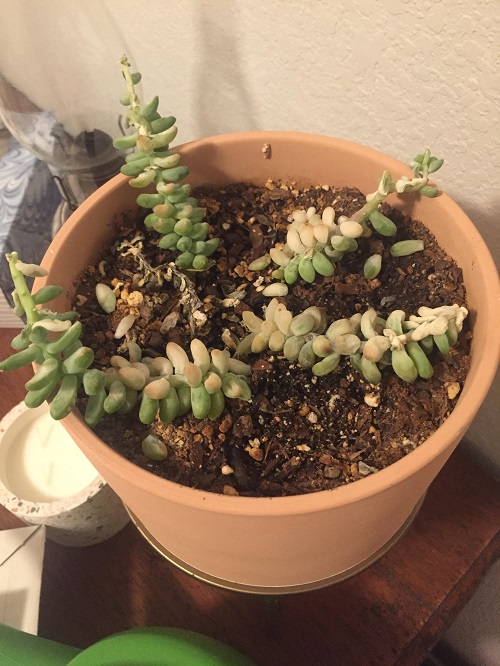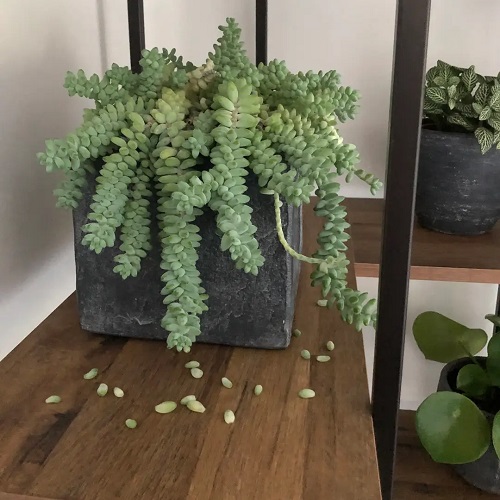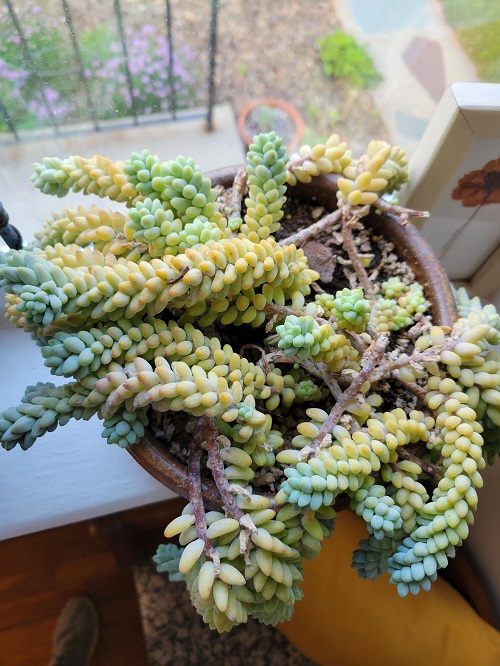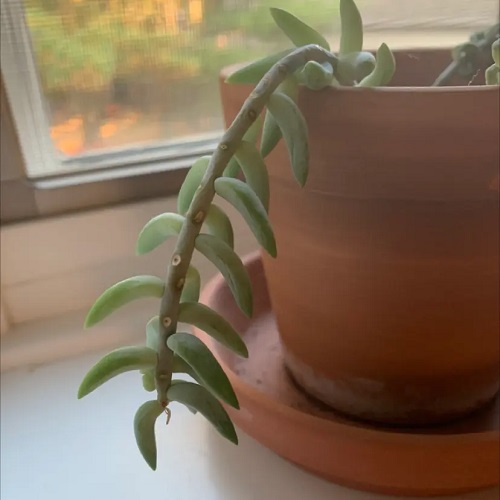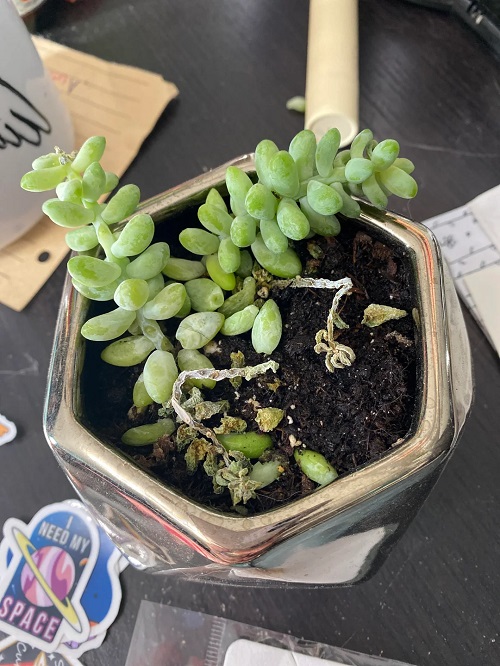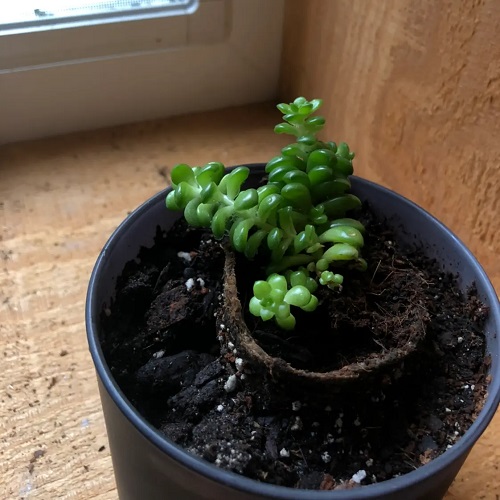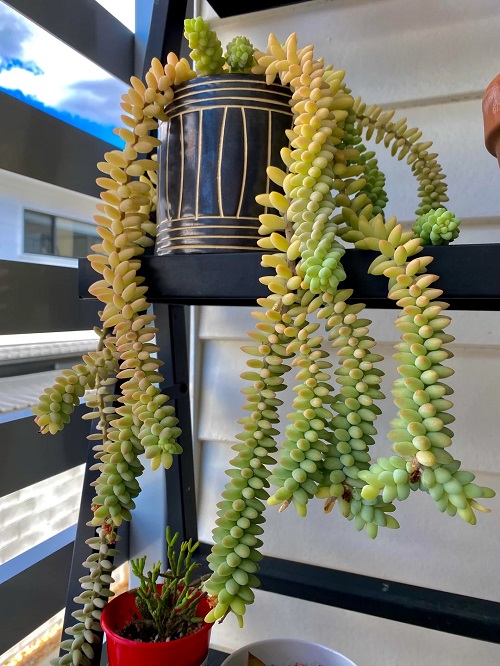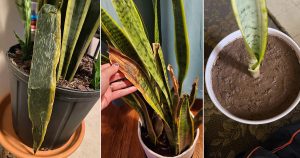Is your donkey’s tail plant looking sad and droopy? Don’t worry, we’ll let you know how you can tell If a Burro’s Tail is dying and how to bring it back to life.
Ever looked at your Burro’s Tail and thought, “Why is my burro’s tail leaves falling off?” Let’s decode the cries for help from your Burro’s Tail. If you see wilting or shedding leaves, brown or yellow spots, or mushy stems, these are all signals from your plant. Overwatering, underwatering, or disease could be the culprits.
How Can You Tell If A Burro’s Tail Is Dying?
1. Drooping or Wilting Leaves
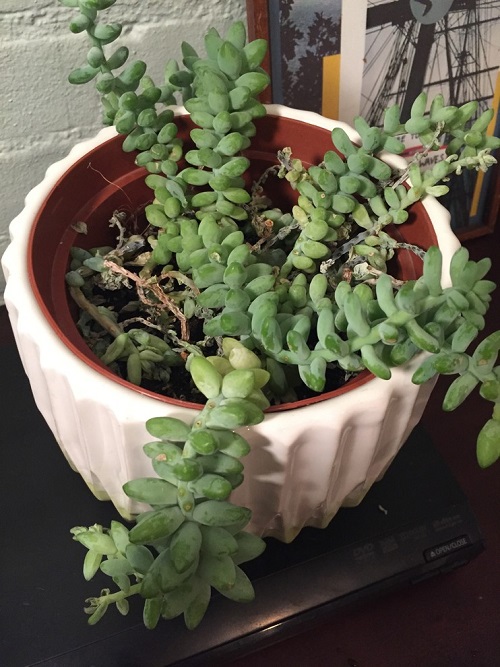
Drooping or wilting leaves are the most common signs of trouble. If your plant’s leaves are soft, shriveled, or discolored, it’s time to investigate your watering habits. Both overwatering and underwatering can cause these symptoms. You should ensure the soil is dry before you water, and aim for a balance—too much or too little water can spell disaster.
2. Leaf Loss
If leaves are dropping like they’re tired of hanging on, your plant is stressed. This can be due to overwatering, underwatering, or pests. You have to examine the leaves and soil, and adjust your care routine accordingly. Healthy plants should hold onto their leaves firmly.
3. Discoloration or Spotting
Brown or yellow patches on leaves indicate something is wrong. These could be signs of sunburn, overwatering, or even a fungal infection. Adjust your plant’s light exposure and make sure it’s in a well-ventilated area. If fungal issues persist, consider using a mild fungicide.
4. Mushy Stems
Mushy stems are the horror movie of plant care—they signal root rot. If this is the case, act fast. You should remove the affected parts and repot the plant in fresh, well-draining soil. And, make sure your pot has drainage holes to prevent water from sitting at the bottom.
5. Stunted Growth
If your Burro’s Tail isn’t growing as it should, it might be root-bound or in need of nutrients. Check if the roots are overcrowded and repot if necessary. Using a balanced, succulent-friendly fertilizer can also give your plant a boost.
6. Soft, Transparent Leaves
Soft, transparent leaves are often a sign of overwatering. Your plant’s roots are likely struggling to breathe in soggy soil. Always allow the soil to dry out completely before watering again, and always use pots with good drainage.
7. Bleached or Pale Leaves
If your Burro’s Tail is turning pale or stretching, it’s crying out for more light. You should move it to a brighter spot with indirect sunlight. And, be careful not to expose it to intense, direct sun, which can cause sunburn.
Reviving Your Burro’s Tail

To revive a struggling Burro’s Tail, start with your watering practices. Always check the soil before watering and ensure it’s dry to the touch. In summer, water every 10-14 days; in winter, extend this to 14-21 days.
Burro’s Tail loves bright, indirect light. But, too much direct sunlight can burn the leaves, while too little light can cause it to stretch out and become leggy. If your plant is turning pale or stretching, move it to a brighter spot, but avoid harsh, direct rays.
Pruning can also help. Trim off any damaged or diseased parts to encourage new growth. Regular maintenance will keep your plant healthy and vibrant.
If your plant is root-bound or the soil is too compacted, repot it. You can use a well-draining succulent mix and a pot with drainage holes to prevent waterlogging and root rot.
Preventing Future Issues
To keep your Burro’s Tail happy, ensure good air circulation and maintain temperatures between 50-75°F but not less than 40°F. Please avoid placing it near drafts or heat sources. Consistent care is key. In addition, stick to a watering schedule, provide adequate light, and monitor the plant regularly.
By understanding the signs of distress and how to address them, you can keep your Burro’s Tail healthy and thriving. Remember, a little attention and the right care can turn your sad succulent into a lush, green beauty.
Conclusion
Caring for a Burro’s Tail can feel like a journey with ups and downs. But with patience and the right care, you can transform a struggling plant into a thriving, beautiful succulent. Share your Burro’s Tail stories and tips with us—let’s grow together!

